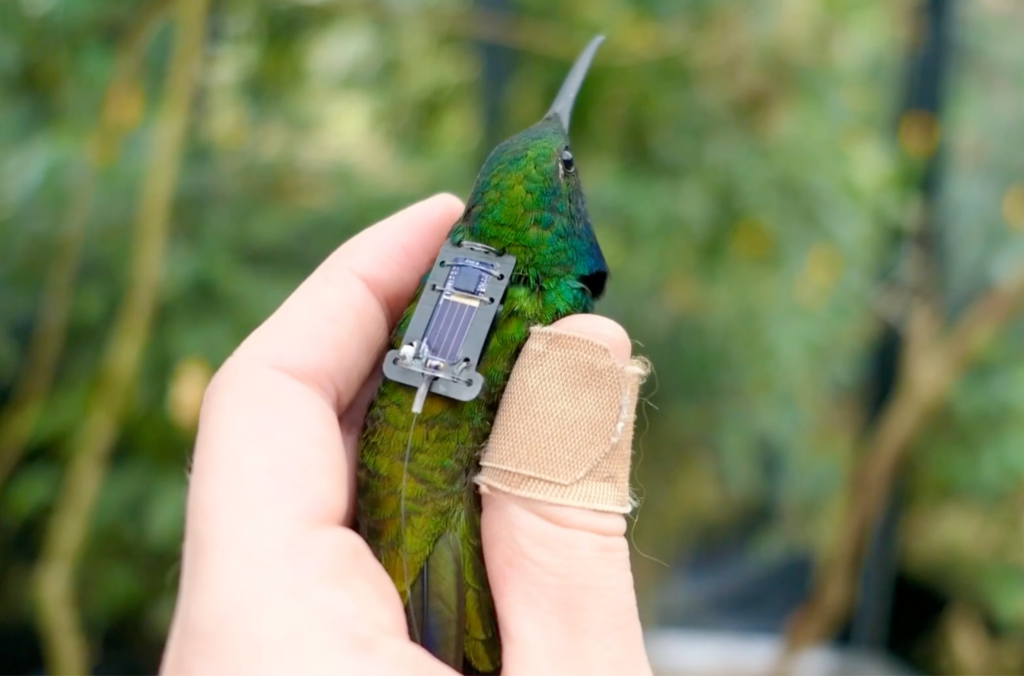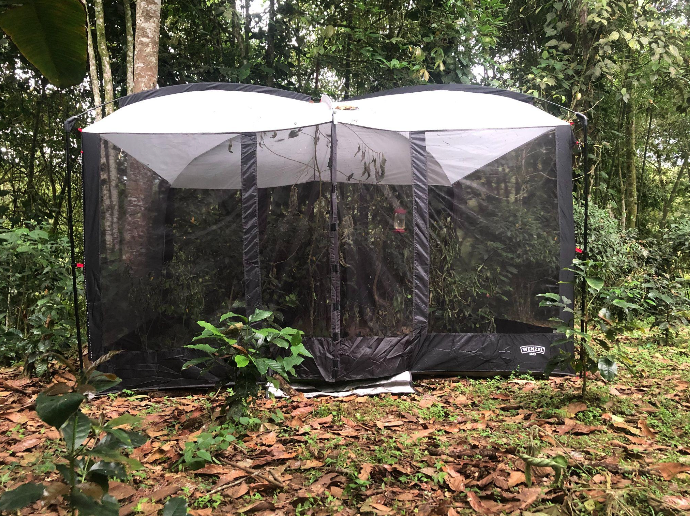“If some giant was to come along and stick something that’s 5% of your weight on your back as a backpack, and you can’t take it off for the rest of your life…like…that’s really stressful.” Alyssa Sargent was pondering with empathy how a hummingbird might feel when she outfits it as part of her research.
Sargent, a Ph.D. Candidate at the University of Washington in Seattle and her team are studying putting “backpacks” on Black-throated Mangos (Anthracothorax nigricollis), tropical hummingbirds widespread in South America with a mass of 6-9 grams, less than two sheets of paper. These backpacks contain a tracking device, the same kind used by many biologists to study wild animal behavior. However, if a tracking device is too heavy it could alter wild animal behavior — a particular risk for small, lightweight animals like hummingbirds. Recent advances in technology have led to tracking devices small enough that hummingbirds could be outfitted with tiny backpack trackers.
Sargent has a long-standing passion for hummingbirds. Before her PhD, she studied birds in the wild, literally following them around. “You are running around after the birds and trying to see where they are going. It was fun but also a lot of work,” remarked Sargent. This experience inspired her to use technology to optimize fieldwork in her dissertation. However, she hesitated to tag them until she knew it was safe. So, she conducted a study on how the birds’ behavior is affected by the tracker worn like a backpack, serving as a preliminary step before tagging wild birds.
Sargent and her collaborators filmed hummingbirds under two treatments — wearing a backpack or not — to see how their behavior would change, if at all. In this case, the backpack consisted of a solar-powered radio-transmitter that sends out signals, a custom chassis to hold the radio-transmitter, and a special harness that loops over the bird’s neck and shoulders. After releasing the birds into a tent with or without a backpack and letting them adjust to their surroundings, the team recorded all behaviors by video camera for an hour. A team of 6 dedicated undergraduates analyzed the footage to determine the duration and frequency of these behaviors — which included flying, feeding, preening, and perching. This experimental design allowed the researchers to assess what effect the backpacks would have on their behaviors under controlled conditions. “Surprisingly, we found that there is no significant difference in behavior,” Sargent remarked.
The team also investigated whether birds with backpacks would become entangled in a more complex environment closer to real-life conditions. They released the birds into a second outdoor tent, one that contained multiple kinds of vegetation. The researchers found no adverse effects of the tags in this setup either, even in an overnight trial.
Although these results offer optimism for biologists concerned about the ethics of manipulating wild animals, Sargent still strongly cautions scientists to include ethical considerations in their wildlife tracking due to our limited knowledge of their behavior. She emphasized, “When we are doing science, it’s easy to think of everything as data and numbers in abstract, but… I mean these are actual living animals we are working with… and it’s really important to try to think from their perspective…If we don’t have empathy for the animals we are working with, then what’s the point?”




Author bio:
Jenny Wong is a PhD student at the University of California, Riverside (UCR). Under the supervision of Chris Clark, she studies phylogenetics and mate choice in hummingbirds. Outside the lab, she loves traveling, bird watching and making a nice cup of tea for her friends.

